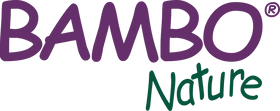As a Danish company, we know that some aspects of Nordic parenting styles seem strange to parents in other countries. So what exactly are the origins and potential benefits of Nordic parenting?
This is just a quick peek at how we typically raise our kids. Our parenting traditions are rooted in a culture that has a high level of trust, equality, and prioritises children’s rights – especially their right to play.
Ice, ice baby
First of all – why do we let our babies nap outside, even during winter? Everyone needs fresh air and, barring dangers of wild animals attacking, you can sleep really well in nature. It’s widely recommended that adults sleep in bedrooms with a temperature around 16-18 degrees Celsius, so it’s not a far stretch to conclude that low temperatures help babies sleep better, too. Babies have to sleep to produce growth hormones. (Who knows, maybe we’re so tall here because we slept so well outside as kids!)
It’s not exactly clear why and when babies began napping outside in Denmark. Of course, there was a time early in human history when we all slept outside, to some degree. But the tradition with outdoor baby naps in Denmark is at least 100 years old. It’s a simple way for your baby to get lots of daylight (and thus Vitamin D) during the dark Danish winter months. We don’t just dump them on any park bench, of course. Modern baby prams are insulated to ensure ventilation and a comfortable temperature for the baby. During winter, babies will wear extra winter suits to stay warm. But if temperatures drop to -10 degrees or colder, or if it’s particularly rainy or foggy, most parents will let their child nap inside.
Almost everywhere you go in Denmark, you can find places to park your sleeping baby outside. Child monitors are widely used and make it easy for parents to act right away when their baby wakes up or cries. As a people, we generally have a very high level of trust in their fellow citizens. We trust that our babies will be safe from others, because historically and empirically, they are and always have been. Besides, there aren’t many wild animals in Denmark that might be a threat to our future generations…
Partners in parenthood
During the 70s and 80s, women migrated into the workforce at an unprecedented pace in Denmark. We now have one of the highest percentages of households with two incomes in the world. Day care institutions became the standard solution that allowed families to split the responsibilities of raising a family more equally between moms and dads, both financially and at a practical level in the home. It’s deeply ingrained in our culture that kids are taught equal curriculum in schools, and they should have equal rights and choices in how they use their education to pursue a career and how they raise a family. Now parents can split almost a year’s worth of parental leave between them and give their child a calm and safe start in life and a chance to form vital bonds and develop as part of the family. That’s why it’s not unusual to see lots of dads with strollers, baby carriers, and prioritizing time with their kids.
Let them eat mud cake
Here in the dark North, we tend to soak up daylight every chance we get, like a nomad who finds a water well in the desert. We’re outside a lot and have access to nature almost regardless of where we live. Most of our coastline, beaches, fjords, lakes, and national forests serve as open playgrounds for kids and adults of all ages. In pre-schools and kindergartens, kids are free to play outside, whether on playgrounds or field trips. They’re allowed to get messy, wet, cold, muddy, sweaty, stumble, splash around and act on their natural curiosity about the world they live in.
When kids learn through play, they become independent thinkers and creative problem solvers. So if your kid proudly presents you with a delicious mud cake, it may be a good idea to encourage them by at least pretending to eat it!

